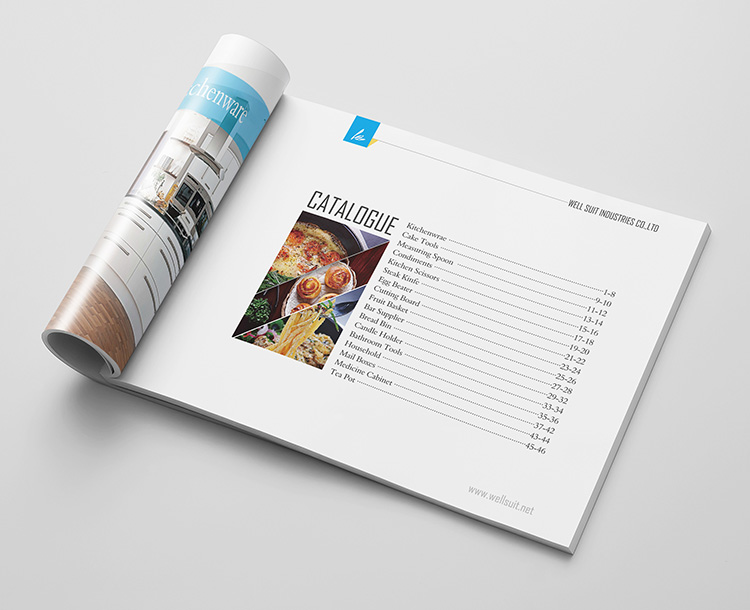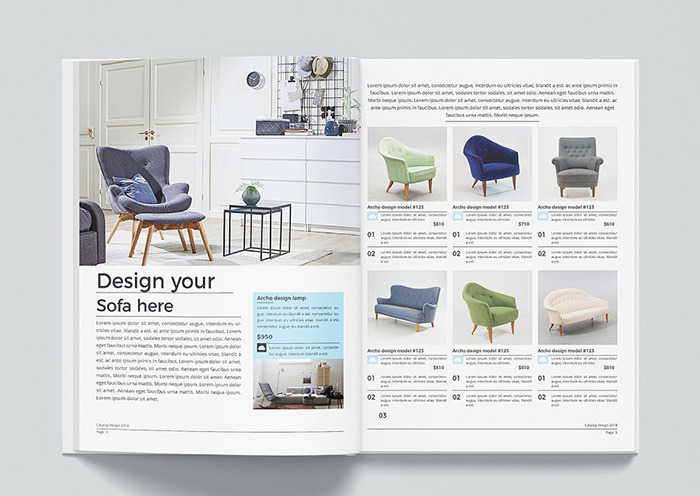Best Tips For Product Catalog Design And Printing
03-03-2023 11:53:02
Design and printing both are important to create an excellent catalog. But how to design and printing your product catalog? All answers you can find at here.

The Pros of design and printing product catalog
Before designing and printing a product catalog, let's learn about the Pros of product catalog. So that to find that why need to design and printing catalog for your company.
1. Promote company culture
Catalog design and printing is mainly a picture album printing product that combines pictures and text. Thus, compared with other advertising product that are only text or pictures. It can better highlight the company's philosophy and culture with visual effects.
2. Promote sales
The catalog can reflect the advantages and characteristics of enterprise products in a concentrated way, enhance consumers' trust and recognition of enterprise image. Thereby stimulating consumers and promoting product sales.
3. Deepen brand impression
An excellent design and printing catalog is organized from the advantages and characteristics of the enterprise itself. So it can well highlight the brand image of the enterprise and deepen consumers' impression of the enterprise brand.
Product catalogue design
Why need to design and printing catalogue? Because making a product catalog can be very effective in expanding our user base. So that our users can learn about all the products our company can provide.
What's a product catalog design?
Product catalog design, also known as product album design. A product catalog design conveys the professional, reliable and authentic atmosphere of this product. Its attraction is that whether it is text or pictures in the layout, it simply uses rectangles to distribute space. It allows us to easily coordinate and unify various elements into a whole.
A good product catalogs bring information about our products to potential users who may not have known about our products before. And the birth of a successful product catalog: the first step is the catalog design. By presenting what is included in your catalog design in an engaging and clear-cut way, you can transform your catalog from an idea into a tangible advertising tool. How to design a product catalog? Below are listed 5 tips.
1. Use visually appealing product images to design catalog
Product images are one of the most important aspects of an entire catalog, as it is the first thing buyers see. As long as the image is engaging, it can drive users to read on for the details and ideally, they'll go straight to buy. To make sure the image printing quality, 300dpi is the best resolution, the minimum is not less than 200dpi.
2. Know the features of your product before design
Know the feature of your product before we write the relevant content of each product. We need to understand the technical specifications of each product in advance. We also can give the quantity and price of the item in the content, involving the original price and the discounted price. During organizing your product, you might also want to write down any good things that come to mind. Maybe, you want users to know all the minutiae about each product, but we're better off just showing them what's good for us. As long as they want to know more about related products, you can let them go directly to your website for inquiries.
3. Select suitable page counts to design catalog
Although the product catalog should be long enough to write more product content. But it is not the longer is better, we must ensure the interest of users and not let redundant details affect their interest. Don't forget that the catalog should have a content table of contents. A full page of featured products, and pages with more information, such as company history.
4. Write a short product description for each product
Please keep each product description short, between 50 and 150 words. Chances are you want to include every product feature in your description, but make sure every feature is beneficial. When you're writing a product description, you aim to help customers pick out the right product. Then, tell them what they need to know about it, from price to weight, or size.
5. Typographic design: big picture, small text.
The main purpose is to allow users to experience the effect of using it in a real environment. In the layout, by showing the use of the product or personal enjoyment experience, users can deepen their understanding of the product. Besides, please use gray font to design the text whenever possible. The gray font is low key, to stand out the product always takes center stage.

Product catalog printing
The main part of product catalogue printing, we can divide into 3 three parts: paper choice, post-process and binding.
1. The paper choice of product catalog printing
Because most product catalogs are print with offset printing, so the paper thickness is very important. If the paper is too thin, it is hard to print with offset printing. Since product catalog with bulk of product images. To make sure perfect copy the colors from artwork, most catalog printing will choose coated paper or matte art paper.
For the catalog cover printing, often select 250gsm and 300gsm coated paper.
Usually, the inner paper choice of product catalog is depends on your page counts and binding. If your pages are less than 40p and with saddle stitch binding, the popular paper for printing such of catalog is available in 80gsm, 105gsm, 128gsm coated paper or matte art paper. The biggest difference between coated paper and matte art paper: reflective or not. The pattern printed on coated paper, which makes the colors more bright, while printed on matte art paper, colors look more soft and textured. If your catalog with perfect binding. The pages are less than 100p, we often recommend with 157gsm coated paper or matte art paper. The pages over 100p, we often recommend 128gsm and 105g coated paper or matte art paper.
2. Post-process on catalog
The post-process is also very important in catalogue printing. Different finishing of catalog, brings the experience for users is different. There are many post-process options for choosing, like lamination, foil stamping, spot UV, emboss, deboss, die cut, etc. Usually, the more complex post-process is, the cost is higher.
Considering the cost of catalog printing, lamination is the most cost-effective one than other post-process. Lamination is available in glossy lamination and matte lamination. Both glossy lamination and matte lamination with the Pros of waterproof, dust-proof and tear resistance. Gloss lamination on catalog, the images look more bright and lifelike, while matte lamination looks more soft and improves the grade of catalog. Sometimes, to make the certain area of the catalog surface more stand out, will select spot UV to achieve this effect.
3. Product catalog binding
There are many binding ways to bind the product catalog. The most important thing is to decide how many pages you need to print and the thickness of the paper. If the pages number of the catalog is less than 40 pages, and the paper is thinner, saddle stitching is more suitable for such of cheap catalog printing. If the pages number is greater than 40 pages, we often recommend perfect binding, which looks more professional and durable than saddle stitching. Also, if you want your catalog looks more high-end, hardcover is a good choice. Because the cost of hardcover is too high, fewer customers select hardcover to custom print catalog.
Catalog design and printing are mutual achievements. An excellent design builds a base of print in high-quality. High-quality printing can take the catalog to another high-grade level and help you bring better advertising effect.
[Go back Menu]

